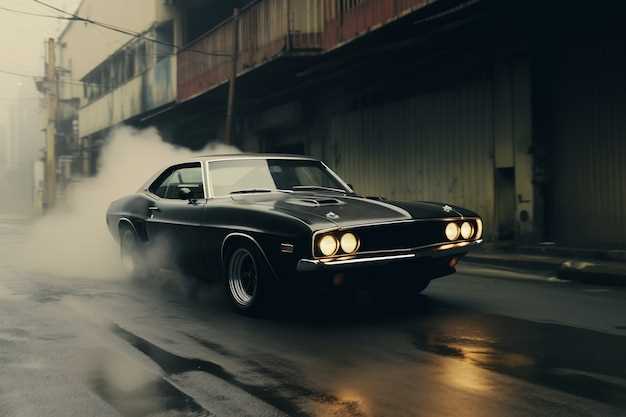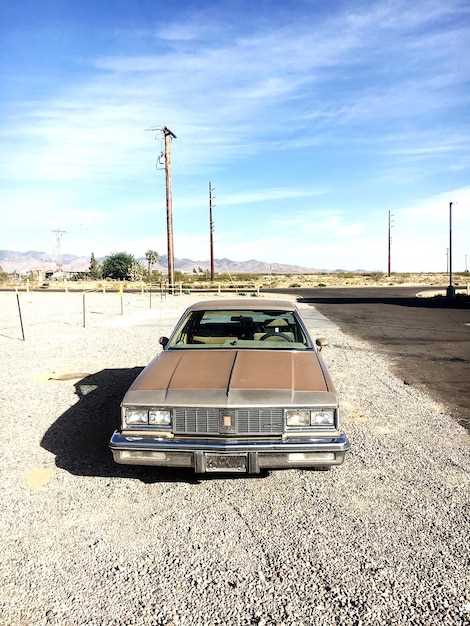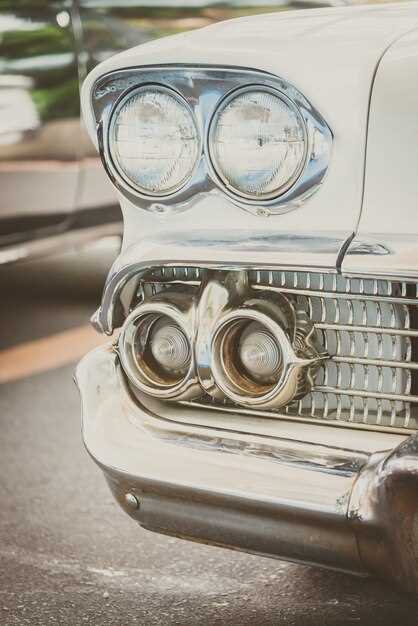
The AMC Javelin stands as a testament to the spirit of the American automotive industry in the 70s. While often overshadowed by giants like Ford and Chevrolet, the Javelin carved a unique path in the world of muscle cars, embodying the essence of an underdog. Its striking design and performance capabilities made it a popular choice among enthusiasts who sought more than just the mainstream options available on the market.
Unlike many of its contemporaries, the Javelin was not born out of an all-American corporate behemoth but emerged from the smaller American Motors Corporation (AMC), which positioned itself as the dark horse in the competitive muscle car arena. With its innovative features and bold styling, the Javelin captured the imagination of the public, challenging the status quo and drawing a loyal following despite the odds stacked against it.
This article delves into the intriguing history of the AMC Javelin, exploring its rise and fall, and celebrating its place in muscle car lore. We will examine the car’s performance, design elements, and the cultural impact it had during a transformative decade in automotive history. Join us as we shine a light on this remarkable underdog, revealing why the Javelin deserves recognition alongside its more illustrious peers.
AMC Javelin: The Underdog in American Muscle Car History

The AMC Javelin emerged in the late 1960s and quickly garnered attention in the competitive automotive landscape of the 1970s. As one of the few offerings from American Motors Corporation, this vehicle represented a fresh approach to the muscle car genre. While it lacked the massive marketing budgets of its rivals, the Javelin carved out a niche as an underdog with a strong performance pedigree and distinctive styling.
Designed to compete with popular models like the Ford Mustang and Chevrolet Camaro, the Javelin combined agile handling with a range of powerful engine options. Its sleek, aerodynamic design caught the eye of enthusiasts, and under the hood, it offered everything from practical six-cylinder engines to fiery V8s. This versatility helped the Javelin appeal to both casual drivers and serious speed aficionados alike.
Throughout the early 1970s, the Javelin was not just a pretty face; it demonstrated its capabilities on the racetrack as well. The car participated in various racing events, showcasing its potential and authenticity as a muscle car. With solid performance specifications, it often surprised its more storied competitors, proving that underdogs could hold their own in a field dominated by bigger names.
Despite its strengths, the Javelin faced numerous challenges, including shifts in consumer preferences and the oil crisis of the 1970s. These factors hampered sales and affected the production longevity of the model. Yet, the AMC Javelin remains a beloved icon among collectors and enthusiasts who appreciate its unique place in American automotive history.
Today, the Javelin serves as a reminder of the spirit of innovation and individuality that defined an era of muscle cars. Its status as an underdog has solidified its legacy, symbolizing the heart of American muscle car history that isn’t always about the biggest engines or the flashiest advertising, but rather the passion behind the wheels.
How the AMC Javelin Stands Out Among Classic Muscle Cars

The AMC Javelin, often viewed as the underdog in the realm of American muscle cars, carved a niche for itself through unique design and engineering. Unlike its more famous competitors, the Javelin offered a compact, aggressive aesthetic that set it apart from the larger, bulkier muscle cars of its time. This distinctiveness attracted a diverse audience, appealing not only to traditional muscle car enthusiasts but also to younger drivers seeking style and performance.
One of the key factors that contributed to the Javelin’s standout status was its innovative approach to performance. AMC prioritized a balance between power and handling, creating a vehicle that was not only fast in a straight line but also agile on winding roads. Equipped with a variety of engine options, from the modest 225 cubic-inch straight-six to the formidable 390 cubic-inch V8, the Javelin catered to different performance appetites without sacrificing drivability.
The Javelin’s role in competitive racing further solidified its reputation as an underdog. AMC strategically entered the muscle car market with a focus on competition, particularly in the Trans Am series, where the Javelin showcased its prowess against much more established rivals. This involvement in motorsports allowed the Javelin to gain recognition as a formidable competitor, proving that it could hold its own against the titans of the industry.
Furthermore, the Javelin’s design is noteworthy for its era. The car featured bold lines and a sporty silhouette, distinguishing it visually while also enhancing aerodynamics. The availability of various paint options and decals allowed for personalization, fostering a sense of ownership among drivers. This aesthetic appeal, combined with its performance capabilities, helped the Javelin build a fervent fan base that remains loyal to this day.
In summary, the AMC Javelin stands out among classic muscle cars due to its unique blend of style, performance, and racing heritage. As an underdog, it faced considerable challenges but ultimately emerged as a symbol of innovation and resilience in the American muscle car landscape. Its legacy continues to inspire automotive enthusiasts who appreciate the distinct qualities that make the Javelin a remarkable piece of history.
Performance Comparisons: AMC Javelin vs. Major Competitors of the 70s
The AMC Javelin emerged as an underdog in the muscle car scene of the 1970s, competing against industry giants like Ford, Chevrolet, and Chrysler. Despite its relatively modest production numbers, the Javelin managed to carve out a niche for itself thanks to its unique styling and performance capabilities.
When comparing performance metrics, several areas of interest highlight the Javelin’s strengths and weaknesses relative to its competitors:
- Engine Options:
- The Javelin offered a range of engines from the economical 232 cubic inch inline-six to the powerful 401 cubic inch V8.
- In contrast, the Chevrolet Camaro and Ford Mustang typically had more diverse engine options, including smaller displacement V8s.
- Horsepower:
- The 401 V8 in the Javelin produced a respectable 330 horsepower, establishing it as one of the most potent muscle cars of the era.
- The Ford Mustang’s 351 Cleveland V8 offered similar horsepower, thereby representing one of Javelin’s toughest competitors.
- Acceleration:
- In tests, the Javelin managed impressive quarter-mile times, often matching or beating contemporaries like the Pontiac Firebird.
- However, the Camaro frequently edged out the Javelin in both acceleration and handling, showcasing superior engineering.
- Styling and Design:
- The Javelin’s distinctive design was a bold statement that set it apart from the more conventional looks of its rivals.
- While Ford and Chevrolet often focused on performance-oriented designs, the Javelin combined aesthetics with power, appealing to a different buyer demographic.
Despite its underdog status, the AMC Javelin proved that it was a serious contender in the 70s muscle car arena. Its combination of unique styling, solid performance, and competitive pricing allowed it to hold its ground against more popular models. The Javelin’s legacy continues to inspire automotive enthusiasts who appreciate its place in American muscle car history.
Restoration Tips for AMC Javelin Enthusiasts and Collectors
Restoring an AMC Javelin is a rewarding endeavor that allows enthusiasts and collectors to preserve a piece of automotive history, particularly one that stands as an underdog in American muscle car lore. Here are some essential tips to ensure a successful restoration project.
First, begin by thoroughly researching the specific model and year of your Javelin. Understanding the unique features and specifications of your vehicle will help you source the correct parts and maintain authenticity. Utilize resources like AMC forums, restoration guides, and dedicated social media groups to connect with other collectors who share your passion.
Next, assess the condition of your Javelin. Create a detailed inventory of any rust, damage, or missing components. Prioritize repairs based on structural integrity, as this will ensure a solid foundation for the rest of your restoration. Pay special attention to frame and bodywork, which can significantly affect performance and safety.
When sourcing parts, consider both OEM and aftermarket options. While original parts can enhance value and authenticity, high-quality aftermarket alternatives may provide better availability and performance. Networking with fellow enthusiasts can often lead to valuable leads on rare components.
Document your restoration process meticulously. Keep a journal that includes photographs and descriptions of each phase. This record not only serves as a valuable reference for future work but can also boost the vehicle’s resale value by demonstrating the care and attention taken during restoration.
Maintain a budget but remain flexible. Unexpected expenses may arise, particularly when dealing with older vehicles. Setting aside a contingency fund can help alleviate the stress of unforeseen repairs and keep your project on track.
Lastly, don’t rush the process. Take the time to ensure that each part of the restoration meets your standards. Whether it’s the paint job, engine overhaul, or interior refurbishment, quality craftsmanship will pay off when you showcase your AMC Javelin, celebrated as the underdog it is in the world of American muscle cars.












